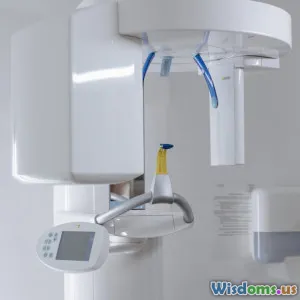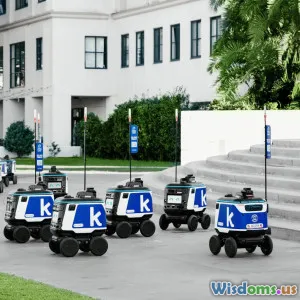
How Automation is Reshaping Jobs
7 min read Explore how automation is transforming job landscapes, creating challenges and opportunities in today’s workforce. (0 Reviews)
How Automation is Reshaping Jobs
Introduction
In the 21st century, nothing exemplifies technological progress more vividly than automation — a quiet revolution hiding behind the scenes, steadily changing how we work. From self-checkout lanes at supermarkets to AI-driven chatbots, automated systems have touched nearly every aspect of the workplace. But beyond convenience, automation is reshaping jobs on a fundamental level. This article dives deep into how automation is transforming employment landscapes, examining the challenges, opportunities, and what the future holds for human labor.
Evolution of Automation: More Than Robots
Traditionally, automation conjures images of robotic arms assembling cars in factories. While robotics remain a significant cornerstone, modern automation encompasses software algorithms, machine learning, artificial intelligence (AI), and robotic process automation (RPA). For instance, AI models now analyze huge datasets to help businesses make strategic decisions faster, supplanting many manual data-processing roles.
According to the McKinsey Global Institute's 2023 report, about 60% of all occupations have at least 30% of their activities that are automatable. This breadth reveals that automation is penetrating white-collar and service sectors as much as manufacturing.
Impact on Current Workforce
Job Displacement vs Job Transformation
One of the biggest concerns is job displacement. Machines efficiently perform repetitive or routine tasks—think data entry, assembly line work, and even customer service queries. For example, Amazon’s fulfillment centers utilize thousands of robots that handle goods movement, reducing the need for manual labor.
However, emphasizing displacement alone misses the bigger picture. Many jobs evolve rather than vanish. Automation often takes over mundane tasks, freeing workers to focus on complex problem-solving, creativity, and interpersonal roles that machines cannot replicate. In the healthcare sector, AI aids diagnostics but doesn’t replace doctors; it allows them to spend more time on patient care rather than paperwork.
Creation of New Job Categories
Automation breeds new roles—AI specialists, data scientists, and robot maintenance technicians illustrate fresh job avenues. PwC anticipates that by 2030, automation will lead to a net gain of 2 million jobs globally. Emerging professions also include ethical AI auditors and virtual environment designers, highlighting how technology spurs workforce diversification.
Industries Undergoing Dramatic Change
Manufacturing
Manufacturing was the launchpad of industrial automation, and it continues to evolve. Smart factories utilize IoT sensors that communicate endlessly, optimizing production in real-time. For instance, Siemens' Amberg Electronics Plant implemented automation to increase quality levels from 85% to over 99.9%, while enabling workers to upskill and supervise sophisticated systems rather than manually assemble.
Retail and Customer Service
Automation facilitates personalized shopping through recommendation engines and automated inventory management. Chatbots powered by natural language processing answer consumer queries 24/7, enhancing customer experience but diminishing some entry-level support roles.
Finance and Accounting
The finance sector leverages RPA to handle transactional operations, fraud detection, and compliance checks more rapidly and accurately than humans. This shift means accountants focus more on strategic advisory rather than number crunching.
Skills for the Future: Adapting to Automation
The automation era demands new skill sets. Critical thinking, complex decision-making, emotional intelligence, and digital literacy are increasingly prized. As machines handle operations, human roles gravitate towards orchestration and creativity.
Educational institutions and corporations are responding accordingly. Google’s Career Certificates and IBM’s Digital Badges offer pathways to gain relevant skills quickly, reflecting a growing emphasis on lifelong learning.
Reskilling and upskilling initiatives, supported by governments and industry partnerships, aim to make the workforce agile. South Korea’s “Digital New Deal,” for example, allocates funds to prepare workers for AI-integrated environments.
Ethical and Societal Considerations
Automation's benefits raise important questions about inequality, job access, and the human element in work. Without inclusive policies, displacement risks widening socio-economic gaps. Workplace automation must be paired with fair labor practices and social safety nets.
Furthermore, dependence on automation invites cybersecurity threats and operational errors if unchecked. Transparency in automation decisions, especially in hiring or loan approvals, is crucial to avoid biases embedded in AI.
Conclusion
Automation is neither an unmitigated threat nor a simple panacea for productivity. It is a powerful force transforming the nature of work, altering industry landscapes, and redefining human roles. The key to harnessing automation’s potential lies in adaptation: embracing change, investing in human capital, and fostering ethical frameworks.
As the line between human effort and machine execution blurs, those who innovate, learn, and evolve alongside automation will thrive. The future of jobs isn’t just about machines replacing people — it’s about humans working smarter and more creatively in partnership with technology.
References:
- McKinsey Global Institute, "The Future of Work After COVID-19," 2023
- PwC, "Will robots really steal our jobs?" 2022
- Siemens, Smart Factory case studies
- South Korea Digital New Deal initiative
Rate the Post
User Reviews
Popular Posts





















